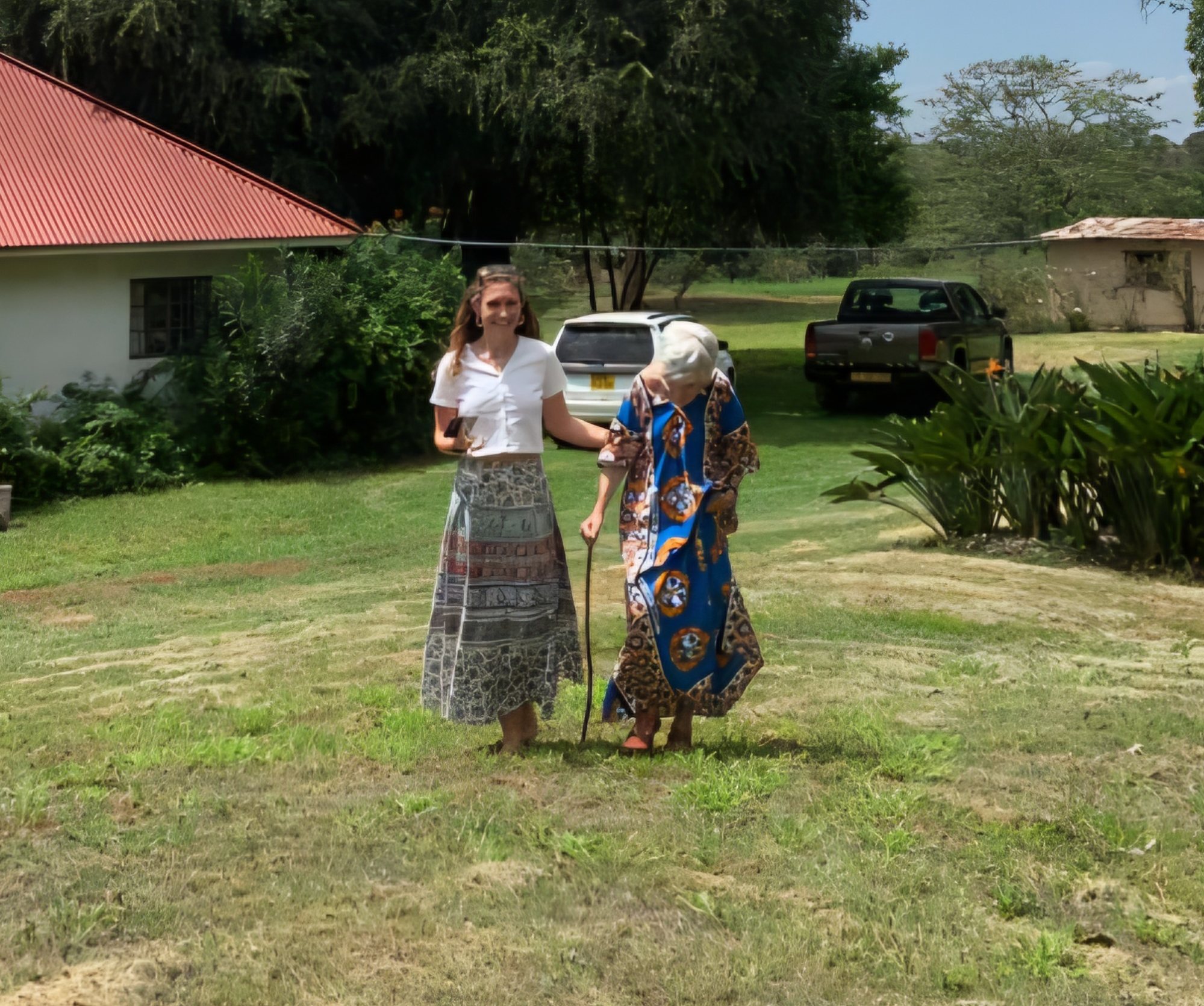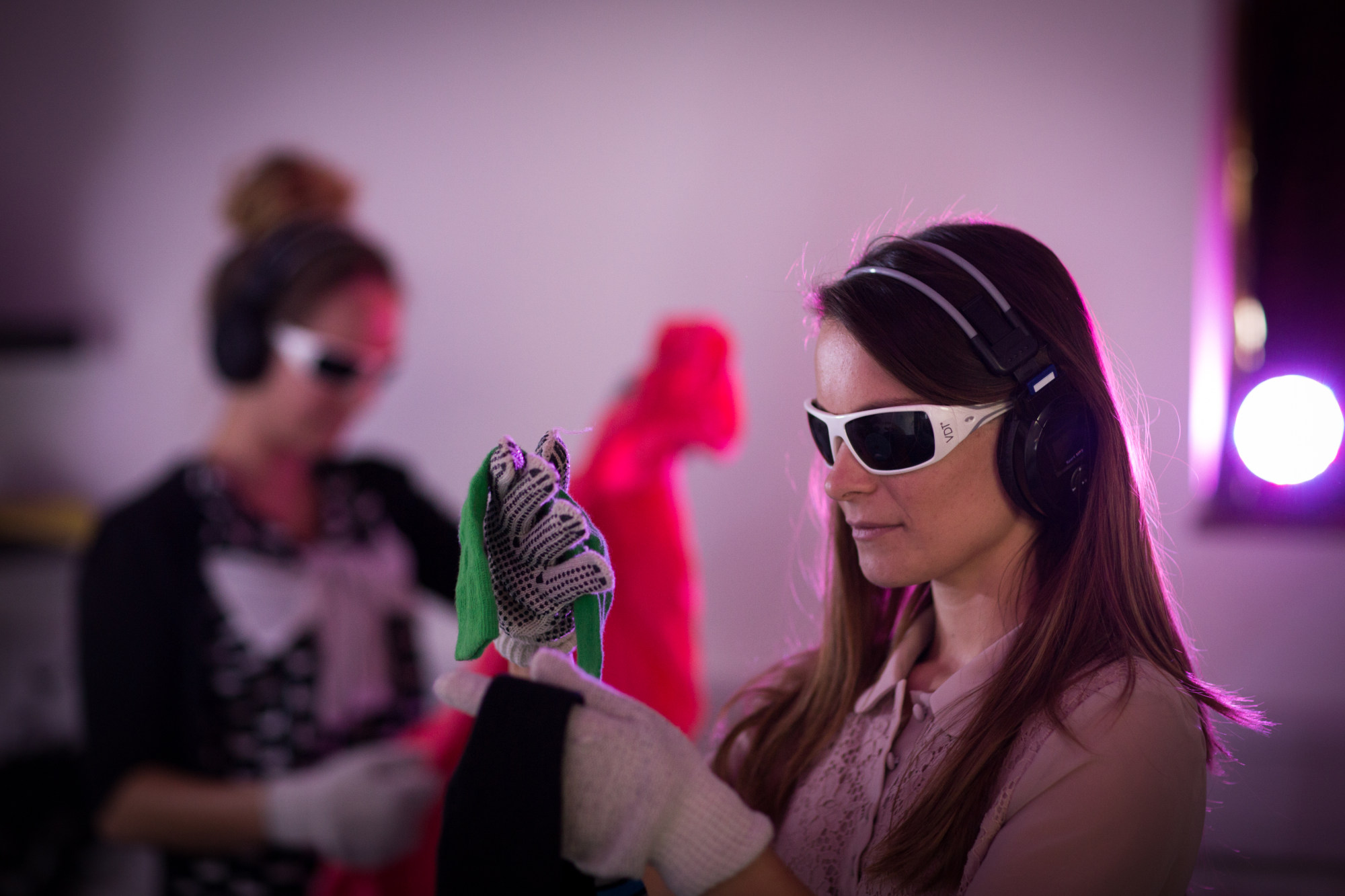
How an early sign of dementia could be difficulty walking a curved path – an expert says to beware of gait changes in loved ones
- Walking along a curve demands better balance, coordination and cognitive input than straight walking; problems doing so may help flag dementia early, study says
- A writer’s mother who developed dementia began to list when walking, as if drifting off her path, long before she began to show signs of forgetfulness
Commissioned to write a play to raise awareness of dementia sufferers’ experiences, Dani Shapiro took part in a virtual dementia tour for which she donned scratched goggles and earphones that played random noises – loudly.
Wearing several pairs of gloves made it difficult to move or use her fingers. And wearing shoes with sharp spikes in the soles made her shuffle awkwardly.
I remember that shuffling in my mother; it grew more pronounced as her illness advanced, and is a common feature of Alzheimer’s disease.

Behnaz Ghoraani, co-director of Florida Atlantic University’s Centre for Smart Health, in the US, has a PhD in engineering. But her research intersects with healthcare and offers insights into conditions such as dementia.
She and her team recently published a study into walking, specifically “curve walking”.
Curve walking, Ghoraani explains, refers to walking along a non-linear or curved path, as opposed to moving in a straight line.
How dental health may affect brain health and increase Alzheimer’s risk
“It’s not necessarily about an inability to walk straight but rather about how someone walks when the path itself curves. This could be as simple as walking around a corner in your home, following a circular path in a park or navigating any route that isn’t perfectly straight.”
Curve walking demands better balance, coordination and cognitive input than straight walking, which is why it was the subject of the study.
“When you walk in a curve, your body has to adjust constantly to maintain balance and direction, integrating information from your vision, inner ear – which helps with balance – and muscles,” Ghoraani says.

Curve walking, then, may reflect changes in cognition, and so may help to flag early dementia.
I am reminded now of how my mother began to list when walking, as if drifting off her path, long before she began to show signs of forgetfulness.
Gait changes can be subtle, Ghoraani says, and involve changes in walking speed, length of stride, and how much a person may sway from side to side.
These changes might be the result of normal ageing, but they can also signal underlying health issues, including those related to cognitive function, she says.
Is walking a miracle cure? A hiker’s health turnaround after long hikes
The changes in the way my mother walked were subtle to begin with but towards the end of her life they were marked – as if to represent the quickening pace of the disease as her walking slowed to a shuffle.
The phenomenon of shuffling, Ghoraani says, can be attributed to a complex interplay of physiological changes in the brain as the disease advances.
Dementia affects the brain regions responsible for motor control and coordination, leading to difficulties in controlling leg and foot movements, she says – hence the shuffle.

This is made worse by changes in balance and stability, as dementia can impair the brain’s ability to process spatial awareness and body positioning, so individuals shuffle their feet to lower their centre of gravity and improve balance.
I am reminded of my sister’s response when I asked her why our mother had adopted her peculiar walk: “To try to keep her balance,” she suggested.
Dementia does more damage than that, though; it also affects a person’s ability to plan, initiate and execute movement, which can result in shuffling as the brain struggles to send correct movement signals.
High blood pressure? Why tai chi is better than aerobic exercise to lower it
Add to that the fear of falling that comes with age and frailty, exacerbated by a feeling of imbalance, and a person might begin to drag their feet cautiously to minimise the risk of falls.
It’s not just about what’s happening in the brain. Dementia often leads to reduced physical activity, which can cause muscle weakness, particularly in the legs, making it challenging for people to lift their feet properly.
In the last months of her life, my mother stopped being able to walk unaided at all; she suddenly began to lean back as she walked and could only stay upright if somebody held her tightly by both hands – as if pulling her on skis.

This sudden change is a distressing situation associated with the advanced stages of Alzheimer’s disease.
As Alzheimer’s progresses, Ghoraani says, it profoundly affects the brain’s ability to control motor functions and maintain posture, leading to severe difficulties with walking and standing.
This neurological decline can happen abruptly, reflecting the disease’s unpredictable progression. I noticed this often during my mother’s illness – that her deterioration was not a steady decline downhill, rather it presented as a series of uneven and sudden steps.
Falls for elderly people can be serious. How to prevent them
The specific posture I noticed in my mother, Ghoraani says, is a condition called “postural instability”, which is common in the latter stages of neurodegenerative diseases such as Alzheimer’s, made worse by muscle atrophy and stiffness.
Families of individuals with dementia or Alzheimer’s disease should be aware that many changes in walking patterns may not be immediately noticeable without the aid of advanced technologies – including artificial intelligence – such as the sort Ghoraani and her team used in their study.
“These technologies can detect subtle variations in mobility that the human eye might overlook,” she says.

But families can – and should – still be on the lookout for more pronounced signs of mobility changes, because doing this will help protect a sufferer’s safety and quality of life.
Proactive measures, such as physiotherapy, home safety assessments and possibly the introduction of assistive devices, can significantly support safer walking, which is key not just to extend independence but to avoid the falls that the elderly, especially dementia sufferers, are susceptible to.
Mortality after hip fracture is high – about 10 per cent of people die within a month of breaking their hip, and about a third within the year, according to the UK’s National Institute for Health and Care Excellence.











